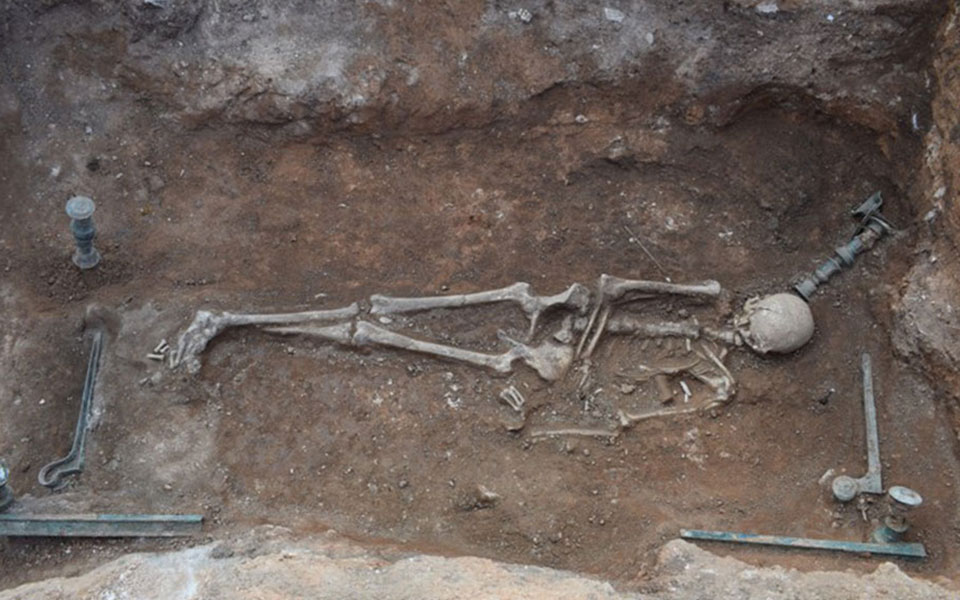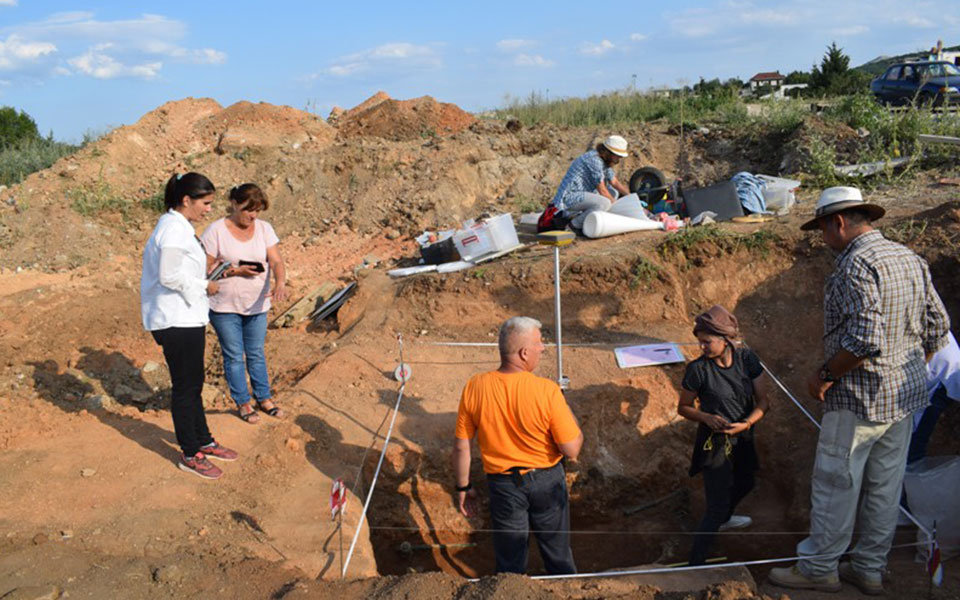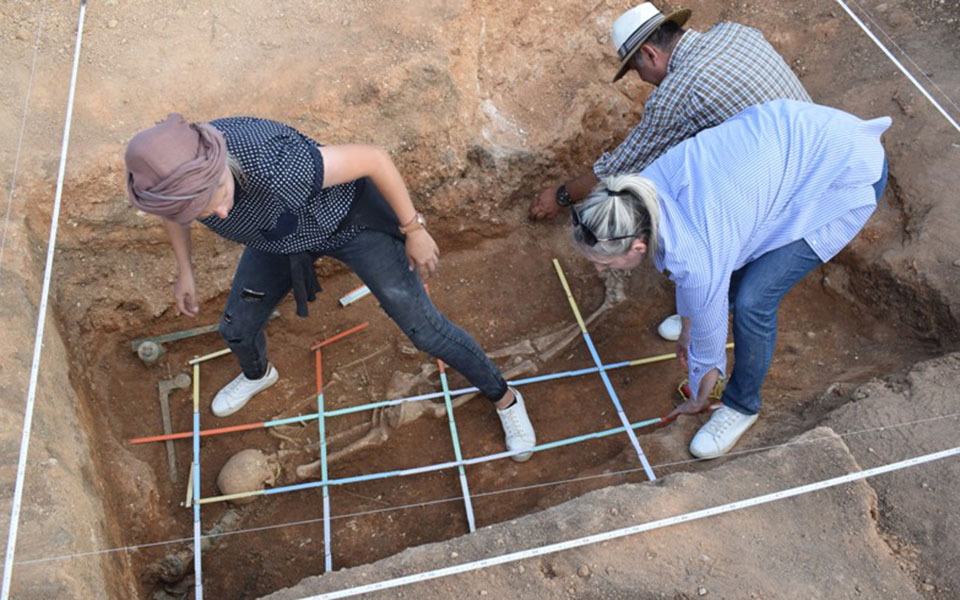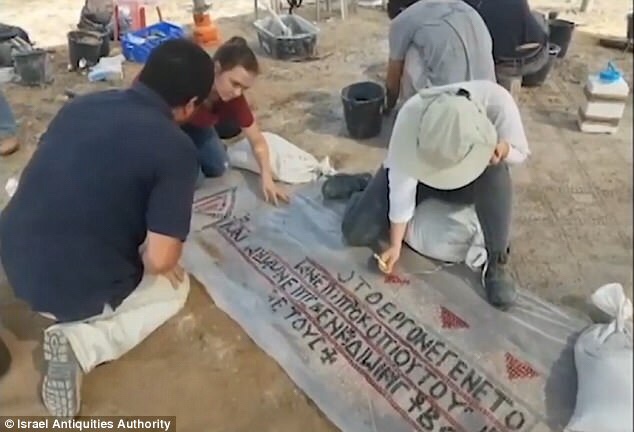6 Αυγούστου 2019
Μοναδικό για τον βορειοελλαδαδικό χώρο θεωρείται το εύρημα της χάλκινης νεκρικής κλίνης που εντοπίστηκε σε ασύλητο τάφο κατά τη διάρκεια ανασκαφής στη Μαυροπηγή Κοζάνης.
Σε σχετική ανακοίνωση της Εφορίας Αρχαιοτήτων Κοζάνης σημειώνεται:
«Κατά τη διάρκεια των εν εξελίξει ανασκαφών της Εφορείας Αρχαιοτήτων Κοζάνης στο λιγνιτωρυχείο Μαυροπηγής, της ΔΕΗ Α.Ε., εντός του εν μέρει κατεδαφισθέντος σύγχρονου οικισμού της Μαυροπηγής, συγκεκριμένα κάτω από τη θεμελίωση οικίας, αποκαλύφθηκε λακκοειδής τάφος, των υστεροελληνιστικών χρόνων (προς τα τέλη του 1ου αιώνα π.Χ.), με πλούσια κτερίσματα. Ο τάφος εντοπίστηκε ασύλητος από την αρχαιότητα και αδιατάρακτος από τη σύγχρονη δόμηση.

Είναι ορθογώνιος, στον τύπο του λακκοειδούς, ενώ δεν μπορούμε να γνωρίζουμε εάν έφερε κάποιο είδος κάλυψης. Πρόκειται για γυναικεία ταφή. Η νεκρή ήταν τοποθετημένη πάνω σε περίτεχνη χάλκινη νεκρική κλίνη, με προσανατολισμό βόρεια – νότια.
Ήταν κτερισμένη με πέντε πήλινα αγγεία (μυροδοχεία και αμφορέα) και ένα γυάλινο, καθώς και κάποια άλλα μικροαντικείμενα. Στην κεφαλή της διατηρήθηκαν χρυσά ελάσματα που πιθανόν κοσμούσαν κάποιο ύφασμα ή κόσμημα κεφαλής από άλλο υλικό. Στο στόμα της βρέθηκε πεπιεσμένο χρυσό έλασμα – πιθανόν επιστόμιο, ενώ πάνω στο δεξί της χέρι διατηρήθηκαν χρυσές ίνες και μικρό χρυσό αντικείμενο, πιθανόν από διακοσμημένο ύφασμα.

Η ανασκαφή στην περιοχή είναι εξέλιξη. Σημειώνουμε, ωστόσο, τη μοναδικότητα του ευρήματος της χάλκινης νεκρικής κλίνης, για τον βορειοελλαδικό τουλάχιστον χώρο και ως ακέραιο αντικείμενο για το σύνολο του ελλαδικού χώρου, σύμφωνα με τα διαθέσιμα δημοσιευμένα αρχαιολογικά δεδομένα, που αναφέρονται μόνο σε κτιστές ή λαξευτές κλίνες. Παράλληλα, το εύρημα παρέχει πολύτιμες πληροφορίες όχι μόνο για την επίπλωση της περιόδου την περιοχή και το ανεπτυγμένο επίπεδο της μεταλλοτεχνίας, αλλά και για τα ταφικά έθιμα και την κοινωνική διαστρωμάτωση του οικισμού στον οποίο ανήκει η ταφή.

Θεωρούμε πολύ πιθανή τη σύνδεσή της με τον σημαντικό και ανασκαμμένο εν μέρει τη δεκαετία του ’80 ελληνιστικό οικισμό στη θέση Κάστρο, στον οποίο φαίνεται να ανήκουν και τα οικιστικά και άλλα ταφικά κατάλοιπα που φέρνει σταδιακά τα τελευταία χρόνια στο φως η αρχαιολογική σκαπάνη στην επέκταση του λιγνιτωρυχείου Μαυροπηγής».


Source: pentapostagma.gr





